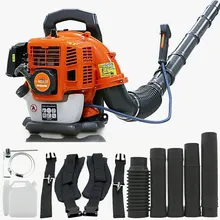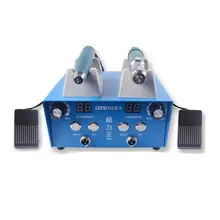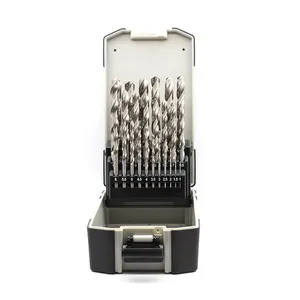Introduction
Drilling technology has come a long way since the days of Ancient Egypt, evolving into a sophisticated industry that employs advanced tools and techniques. At the heart of this evolution is the core bit technology, a game-changer in the drilling industry. This article delves into the history of drilling and core bit technology, its understanding, types, and the revolutionary impact of the latest core bit technology. It also explores the benefits of using this technology, how to choose the right core bit for your project, and considerations for safety and maintenance. Get ready to revolutionize your drilling experience with the latest core bit technology.
The Evolution of Drilling and Core Bit Technology
The evolution of drilling technology traces back to Ancient Egypt, where diamonds were used in construction. The first diamond core drill was invented in the 19th century, using diamonds instead of steel for the cutting edge. Over the years, diamond core drilling became a standard in the mining industry and underwent several improvements. Today, modern core drills are precision cutting instruments used globally for various commercial and governmental purposes, capable of cutting through concrete, glass, metal, stone, and asphalt.
Understanding Core Bit Technology
Core drilling employs a specialized tool known as a core drill or coring tool, designed to cut large holes through masonry surfaces like brick, concrete, cement, sandstone, stucco, and tile. The core drill bit, or annular cutter, is the primary element of a core drill. It's a hollow cylinder tipped with teeth or an abrasive surface. As it rotates and cuts through the surface, it leaves a cylindrical piece of uncut material called a core. The size and diameter of a core drill bit determine how far it can go until it is full of core materials.
Types of Core Bits
Core bits come in four types to accommodate various geological conditions. Impregnated diamond type is ideal for hard rock formations, with a matrix that exposes diamonds for cutting rock. Surface set diamond type is designed for medium-hard conditions, offering high speed penetration and long service life. Polycrystalline diamond type is suitable for soft-medium conditions, providing fast penetration and high core recovery. Lastly, tungsten carbide type is used for very soft conditions, with different insert types like rectangular, taper, octagonal, and fragmentary to suit different drilling conditions.
Diamond Core Bits
Diamond Core Bits are a breakthrough in drilling technology, thanks to the introduction of advanced positioning technology. This technology allows for the precise positioning and orientation of diamonds in the metal matrix, enhancing drilling performance. The diamond core bits offer maximum use of diamond and bond, ensuring no glazing and maintaining consistent drilling speed and sharpness. They are designed to work on practically any material, from ultra-hard granite to softer materials like glass and marble. The advanced coolant system prevents material overheating and cracking, ensuring a smooth and clean finish.
Carbide Core Bits
Carbide core bits are a popular choice for drilling into concrete. They are typically used with rotary hammer drills and are known for their durability and ability to make holes in concrete. However, they have some limitations. For instance, they can cause unsightly finishes due to their pounding action on the concrete. Also, when they hit rebar or steel, the carbide segments can chip off, causing complications. To avoid this, one can switch to a Rebar Cutter in 'drill only' mode, then continue coring with the carbide bit. Despite these challenges, carbide coring remains a viable option.
Benefits of Using the Latest Core Bit Technology
The latest core bit technology, often diamond-tipped, is designed for efficiency and speed. It removes less material than a standard bit, making drilling more rapid. These core drills are commonly used in construction to create large-diameter holes in concrete or stone. Additionally, core drills are water-cooled, and the water carries away waste as a slurry, enhancing the drill's longevity. The use of diamond grit as the abrasive material improves durability, especially when cutting through tough materials like rebar. Wireline core drilling, a technique that extracts the core without retrieving the entire drill tube, exemplifies the precision and accuracy of modern core bit technology.
Increased Efficiency and Speed
The latest core bit technology has significantly increased drilling efficiency and speed. Advanced hydraulic performance allows for faster penetration rates and maintains high performance longer. Optimized cutter placement improves cutting efficiency, even doubling the rate of penetration in some applications. Both technologies have been field-tested extensively, demonstrating their ability to increase drilling speed without compromising durability.
Improved Durability and Longevity
Wet diamond core bits, when used correctly, can drill through concrete and stone faster than their dry counterparts. The water used in the process not only reduces the risk of accelerated core bit wear but also ensures a longer-lasting cutting tool. The lifespan of the bit can vary based on factors such as the material type and density, drilling speed, hole diameter, and cut depth. Therefore, using wet core bits can significantly improve the durability and longevity of your drilling equipment.
Enhanced Precision and Accuracy
The advanced positioning technology used in manufacturing diamond drills enhances precision and accuracy in drilling. This technology allows for the positioning and orientation of diamonds in the metal matrix, ensuring each diamond comes into contact with the material at the right place and time. This results in maximum drilling performance and no glazing, maintaining consistent drilling speed and sharpness throughout its life. The drills are designed to work on practically any material, maintaining consistent performance regardless of the hardness of the material.
Choosing the Right Core Bit for Your Project
Choosing the right core bit for your project involves a systematic process. First, identify the main objective of your drilling project. Next, determine the ground hardness as it significantly influences the type of core bit to use. Then, select the color bit, which is often indicative of the bit's hardness and suitability for specific materials. Afterward, select the correct geometry that aligns with your project's requirements. Finally, test the selected bit to ensure it meets the project's demands.
Considerations for Safety and Maintenance
Core drill maintenance and storage are crucial for safety and longevity of your equipment. Regular visual review of the general condition, ensuring readable safety labels, and checking the electrical equipment are key steps. It's also important to inspect hydraulic hoses, maintain core drill bits, and manage weight-on-bit controls. Flushing equipment and base vacuums also need regular attention. Remember, proper maintenance can enhance the efficiency and lifespan of your core bit.
Conclusion
The latest core bit technology has revolutionized the drilling industry, offering increased efficiency, speed, durability, and precision. From the diamond-tipped core bits to the carbide core bits, each type has its unique benefits and applications. Choosing the right core bit for your project is crucial and involves understanding the ground hardness, bit hardness, and the correct geometry. Moreover, regular maintenance and safety considerations are key to ensuring the longevity and efficiency of your equipment. Embracing this technology not only enhances your drilling experience but also contributes to the overall success of your project.











































 浙公网安备 33010002000092号
浙公网安备 33010002000092号 浙B2-20120091-4
浙B2-20120091-4